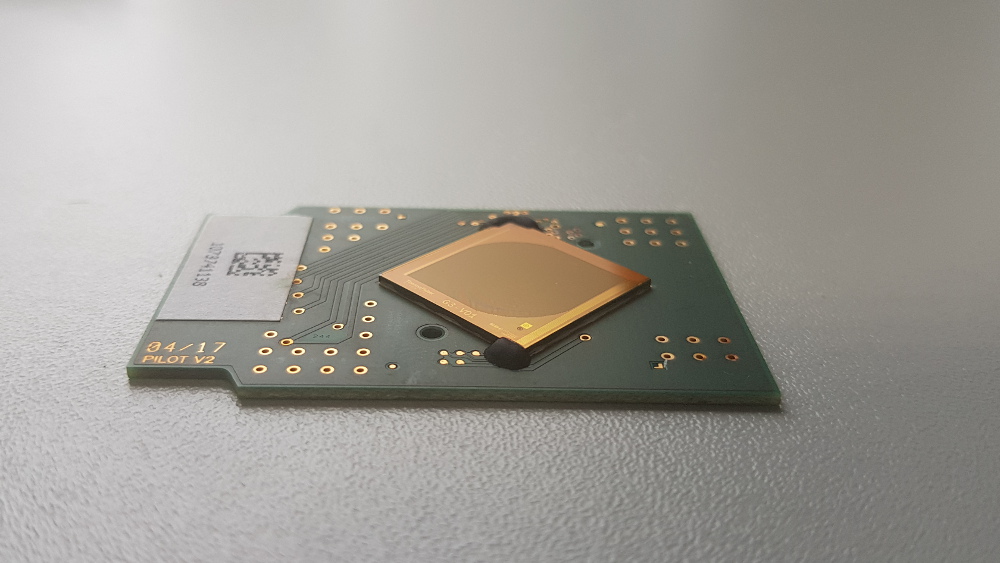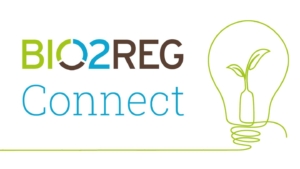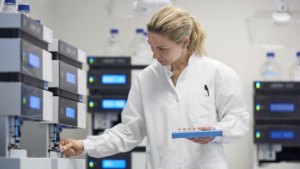
Pioneers in the synbio revolution
Is synthetic biology on the cusp of unlocking the next industrial revolution? A major roadblock is the ability to synthesise DNA for R&D in ways that are both cheap and efficient. Established players in the field believe the answer lies in miniaturising standard chemical processes and running them in parallel systems. But the new kids on the block are betting on a completely new process that involves enzymes.
Nobel-Prize winning Richard Feynman once famously said: What I cannot create, I do not understand. Speaking with European Biotechnology, Thermo Fisher Scientific business leader Helge Bastian tipped his cap to the renowned physicist on the trending topic of synthetic biology. The concept of DNA as a digital code that runs biology and can be read, written and altered hasn’t yet settled in everyone’s mind, he says. The first step was genome sequencing, followed by genome editing – and now it’s time to make genome synthesis a reality. Synthesising small stretches of DNA or RNA has been a cinch for years, and even synthesising genes up to 2,000 nucleotides has become routine. But if synthetic biology is to bloom, it has to be able to master the challenge of building many genes or even whole genomes from scratch. The VP and General Manager of Synthetic Biology at the lab equipment behemoth says the traditional technology to make DNA is ready for the age of synthesised genomes. Others would disagree.
The limits of limited access
Thomas Ybert, the CEO of French DNA synthesis start-up DNA Script, has been involved in the synbio community for years. He has this to say about his time in the lab: I was a metabolic engineer trying to optimise a microbial pathway that leads to a certain, desired end product like a fine chemical or a drug. I was passionate in that, but my day-to-day work was also very frustrating. My progress was limited by my access to synthesised DNA. Researchers from both academia and industry order tailored DNA constructs from companies like Thermo Fisher Scientific, Genscript, Genewiz or IDT/Danaher. It’s a process that can take days to weeks – depending on the length and complexity of the product. And with nucleotides costing from US$300-US$1,000 for a molecule with 2,000 building blocks, the process is costly. All of our customers need high-quality, highly accurate products. Many of them work in the biopharma industry and they generally order specific biomolecules like antibodies. In contrast, true’ synbio companies by nature of their business concept require numerous DNA-sequences or constructs, says Bastian. According to the Thermo Fisher VP, true’ synbio companies build pathways or genomes to program cells to produce a certain molecule or compound. The research cycle – design, build, test – is repeated until a solution is found, which can become extremely costly at the current cost per nucleotide. Thus, there is a need at companies like Ginkgo Bioworks and Zymergen for both high-throughput and more cost-efficient technologies.
For synbio researchers like Ybert used to be, the situation translated into: I buy the cheap small segments and assemble them on my own. That time-consuming task is certainly not intellectually satisfying.
Why this is turning into a multi-billion dollar market
Fast-forward to 2018, where there’s significant buzz in and around the concept of synthetic biology. Market observer Synbiobeta LLC has been recording new funding highs in the field every quarter. 2018 set a blistering pace, with 27 synbio companies raising US$650m in private and public funding in Q1 – twice the amount raised in the same period in 2017. Q2 proved even more impressive: 33 companies raised US$925m, quadrupling 2017 statistics. Synbiobeta now projects the sector will see over US$3bn in funding by the end of the year. That would nearly double 2017 numbers (US$1.7bn). The reason for the boom is obvious: According to Market Research Engine, the global synbio market has a compound annual growth rate of 44.2%, and will exceed US$45bn by 2021.
I personally think that synbio is the next revolution, like the one currently being driven by IT companies. It will change the world around us – from energy production to new materials, Ybert told EuroBiotech. But to release the brakes on the revolution, we need a faster and cheaper way to write DNA. That’s why the scientist-turned-entrepreneur is betting on a new technology aimed at stringing together nucleotides – the building blocks of DNA.
But first let’s take a look at the status quo. The technological roots of current DNA synthesis methods stretch back a long way. The last major improvement was the introduction of phosphoramidites in 1981. Today, the US$1.3bn DNA synthesis industry continues to rely on a chemical process developed almost 40 years ago. Marvin Caruthers is viewed as the seminal inventor of solid-phase DNA synthesis. His process uses the tools of organic chemistry to attach DNA building blocks one at a time. But it has a big drawback – it requires toxic organic solvents and additives. These substances make the execution of the process in the lab cumbersome, and waste is an issue. Even worse, the solvents limit the accuracy of the synthesis process, because they occasionally intersperse the wrong nucleotide into sequences. For all real intents and purposes, chemical DNA synthesis is limited to building molecules with 200 nucleotides at most.
But even a small gene has at least 1,000 of them. So to make longer sequences, researchers have to stitch together shorter sections using a process that is both failure-prone and unable to make certain sequences. Market leaders like Thermo Fisher Scientific are trying to make this stitching process as quick and accurate as possible. But DNA Script and other companies are taking a new path that employs an aqueous process involving enzymes – one that excludes organic solvents altogether.
Forget about the templates
The core of all enzymatic processes is – of course – the enzyme. Nature is extremely efficient at synthesising DNA. The process can be very fast, with one nucleotide added every millisecond by certain enzymes known as polymerases. But there’s a catch. They need a template. Fortunately, enzymes suitable for template-free de novo nucleic acid synthesis have also been identified. At about 200 bases per minute, they’re not terribly fast, but they beat Caruthers’ chemical method easily. The focus of most enzymatic DNA synthesis companies like DNA Script is a polymerase called terminal deoxynucleotidyl transferase. It’s an enzyme found in the immune system of vertebrates whose function is to add nucleotides randomly to some exons in T cell and B cell receptor genes during antibody gene recombination. The diversity introduced by TdT has played an important role in the evolution of the vertebrate immune system, significantly increasing the variety of antigen receptors that a cell is equipped with to fight pathogens. A second enzyme raising some interest at DNA synthesis companies is DNA polymerase ?. Its big advantage compared to TdT is that it can cope with synthetic size-expanded nucleotides. This is relevant because of the way nucleotides are added to chains in nucleic acid synthesis.
A key requirement is to make the enzyme add one and only one nucleotide, then stop – and not add the same nucleotide over and over again. To prevent multiple additions, companies like DNA Script, Nuclera and Molecular Assemblies use nucleotides modified with special blocking groups. However, the problem with that approach is that the catalytic site of TdT is not large enough to accept a nucleotide when a blocking group is attached. Many researchers have tried to use other enzymes like DNA polymerase ?. But as it turns out, TdT remains the most important hopeful. A lot of effort has therefore gone into how to engineer the enzyme to accept large nucleotide variations without impairing its synthesis activity. It’s not an easy problem to tackle, admits Jiahao Huang, Director & Co-founder of British DNA synthesis start-up Nuclera. We took a broad approach in the beginning, essentially surveyed as many orthologs as possible and chose the ones that showed significant improvement compared to commercially available TdT in incorporating reversibly terminated nucleotides. Our subsequent engineering rounds were semi-rational, and use a combination of well-known and novel protein engineering methods. The result is that we now have enzyme-nucleotide combinations that essentially can quantitatively get from n to n+1 with a very fast reaction time.
The race is on to find the best enzyme for catalysing the addition of single nucleotides to form long DNA sequences. Everyone involved underlines certain advantages of the technology, especially the fact that it’s water-based and toxin-free. Ybert thinks that in future, special facilities to synthesise DNA will no longer be necessary. He finds the idea of a DNA printer for every institute or research group very appealing.
In chemical synthesis, however, the top dogs aren’t just twiddling their thumbs. Agilent Technologies is developing a process based on inkjet on glass slides. Roche Nimblegen is pursuing a photolithographic process. And Synthomics is looking at a microfluidic process to synthesise DNA via the phosphoramidite path. Small start-ups like Austria’s Briefcase Biotec are also trying to bring special phosphoramidite-based DNA primer synthesis devices into the lab. (The tagline for their Kilobaser device: The Nespresso machine of DNA synthesis.) US company SGI-DNA already introduced what the company called the world’s first DNA printer back in early 2016. However, the BioXp 3200 system isn’t able to synthesise DNA. It’s merely a device for the automated cloning of de novo DNA fragments. But real benchtop and hands-free DNA printers are no longer a distant dream. Chemical DNA synthesis has been optimised, miniaturised and parallelised over the past few years, explains Thermo Fisher’s Helge Bastian. Competing with SGI-DNA for the top spot, he sees his companys Geneart business – based in the German city of Regensburg – as one of the world leaders for large and hard-to-make DNA constructs. At Geneart, 300 people are fully dedicated to gene synthesis, making it Europe’s largest gene synthesis facility. The company was founded in 2002. We’re actually the pioneer in gene synthesis, the manager points out.
Geneart – along with competitors like Twist Bioscience and Ginkgo Bioworks subsidiary Gen9 – produces oligonucleotides on a semiconductor-based chip. Each molecule is about 60 nucleotides long, and we do 35,000 of them on a chip the size of your thumb, says Bastian. Compared to the oligonucleotide industry producing PCR primers and the like, the gene synthesis realm boasts completely different platforms. It copes with femtomole quantities, resulting in DNA molecules that are almost error-free. Because of the miniaturisation trend, the industry’s toxic chemicals problem is less and less of an issue, he adds. Even though his company’s technology would remove one of the main advantages of enzymatic DNA synthesis, Bastian insists he’s also a big fan of what those companies are trying to achieve: We haven’t started an R&D project ourselves, but we’re closely watching what’s going on. If the technology advances to a certain stage, we hope we can partner with one of the developers to advance it into a successful product. At this point, the Thermo Fisher Scientific business leader thinks all the competitors in the field are more or less at the same developmental stage.
Efficiency on par with traditional methods
The three most advanced start-ups in the area – DNA Script, Molecular Assemblies and Nuclera Nucleics – were all founded in 2013 or 2014. While their big goal at the moment is to make gene-length DNA molecules in a single go, one low-hanging fruit is building DNA printers to produce the oligonucleotides needed for various molecular biology tasks in the lab. A benchtop DNA printer would allow researchers to make their PCR primers quickly, instead of waiting for their orders to be processed at firms like Eurofins, Thermo Fisher Scientific, Sigma-Aldrich/Merck or IDT/Danaher.
DNA Script’s Thomas Ybert says progress in making long, flawless molecules has been amazing so far: Efficiency of enzymatic conversion in our process is better than 99.3% per cycle at the moment. Even at this stage, we’re at par with the best existing chemical synthesis methods, he says. When it comes to the other important parameter – length – the company presented data at a conference in May suggesting it could enzymatically synthesise a strand of DNA with 50 nucleotides. This result is a world first for enzymatic DNA synthesis and a significant milestone, says Ybert. It shows that enzymatic DNA synthesis can compete with the traditional chemical method. Some nucleotides are easier to incorporate than others, but Ybert confirms that DNA Script’s enzymatic system incorporates nucleotides from each of the four classes containing thymine, adenine, cytosine and guanine. Nuclera’s Jiahao Huang acknowledges that the DNA Script result has helped raise confidence in enzymatic DNA synthesis. So what progress has Nuclera achieved so far? Our main focus right now is to improve accuracy and reduce base-bias of DNA synthesis. But we’re also working on an automated synthesis platform that will make writing longer length a routine process, explains Huang.
The UK – a hotbed for synbio
Two other enzymatic DNA synthesis companies are based in Britain: Evonetix from Cambridge and Genome Foundry from Oxford are even more close-lipped than other companies in the field. The synbio sector seems to be flourishing in the island nation. Over 146 start-ups were founded there between 2000-2016. Synthetic biology also has tremendous political support in the UK. One of the country’s seven Innovation and Knowledge Centres focuses on promoting the commercial exploitation of synbio research. Established in 2013, SynbiCITE received kickstart funding of £28m.
Interestingly, some British sequencing pioneers are trying to repeat their proven successes with DNA synthesis. Genome Foundry was set on its path by Oxford Nanopore, a company best known for its portable DNA sequencer Minion. And there’s also some history behind Evonetix. Initially headed by Nick McCook and Joe Brennan, former managers of next-generation sequencing pioneer Solexa, Evonetix has been heralded by some in the Cambridge biotech universe as the Next Big Thing. Solexa was bought by Illumina (US) for US$600m in 2006, and it’s still a major employer in Cambridgeshire.
Forget about the enzyme
In a surprising twist to the enzymatic DNA synthesis story, the first peerreviewed paper claiming the first successful synthesis of a 10-nucleotide molecule with enzymes was published this summer by newcomers to the field. In setting up the process, researchers David Arlow and Sebastian Palluk (UC Berkeley and Lawrence Berkeley National Laboratory) took a different approach than the companies mentioned so far. Instead of engineering the reactive site of TdT to convince it to accept larger modified nucleotides, they simply left the catalyst just as it is.
So how did they prevent multiple additions to the molecule in the making? Arlow’s idea was to securely tether an unblocked nucleotide to TdT. After the nucleotide was added to a growing DNA molecule, so the theory, the enzyme would remain attached and protect the end of the chain from further additions. Then after the DNA molecule was extended, they could cut the linking tether to dump the enzyme, re-exposing the end for the next addition. We demonstrated that we can extend a primer by a single nucleotide in 10-20 seconds, Palluk told EuroBiotech. When we analysed the products, we were able to determine that about 80% of the molecules had the desired 10-base sequence, he added. That means, on average, the yield of each step was around 98%, which is not too bad for a first go at this over 50 year-old problem.


 BIOCOM / aminul788 - Adobe Stock
BIOCOM / aminul788 - Adobe Stock Bayer Co.Lab
Bayer Co.Lab